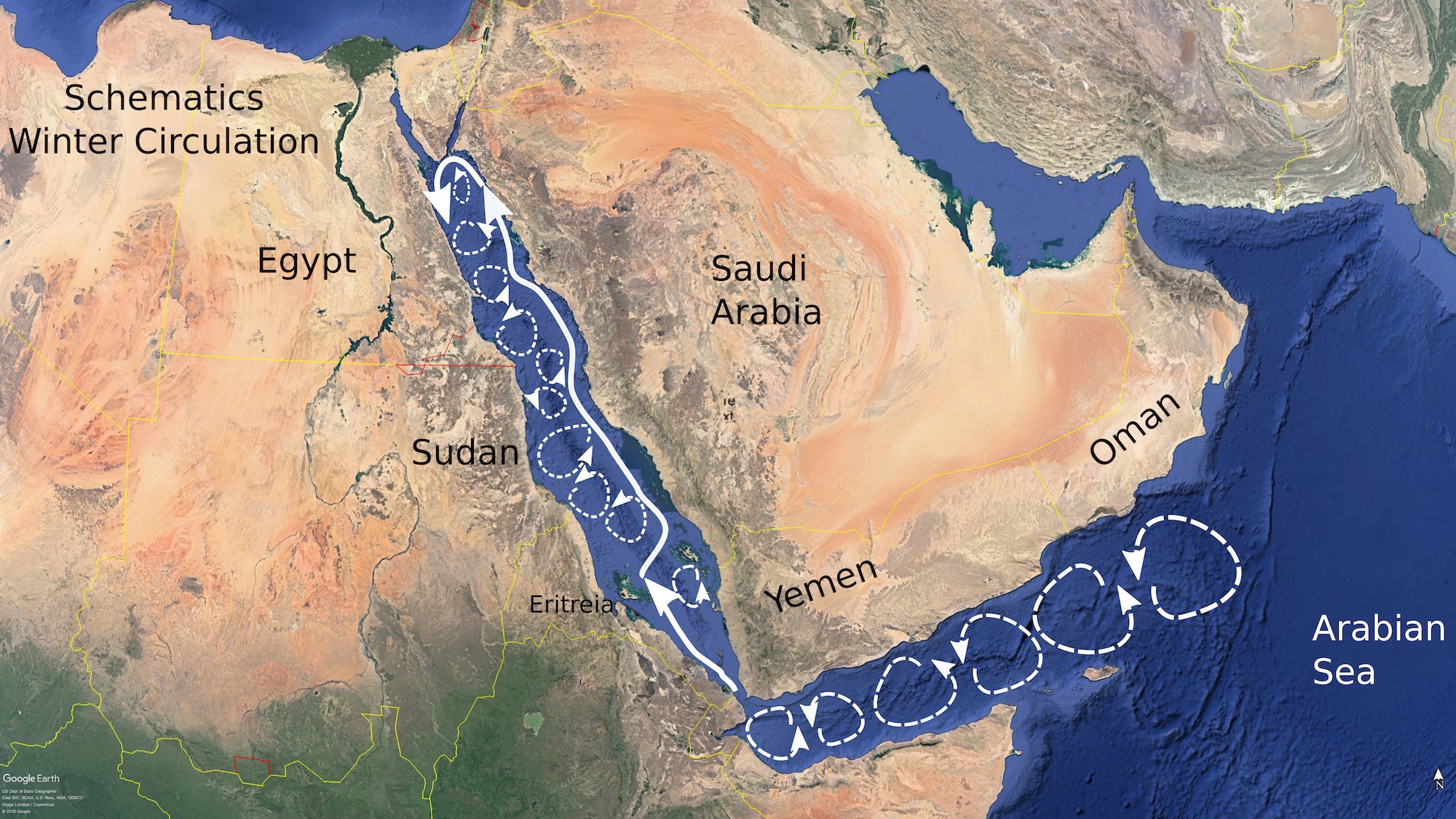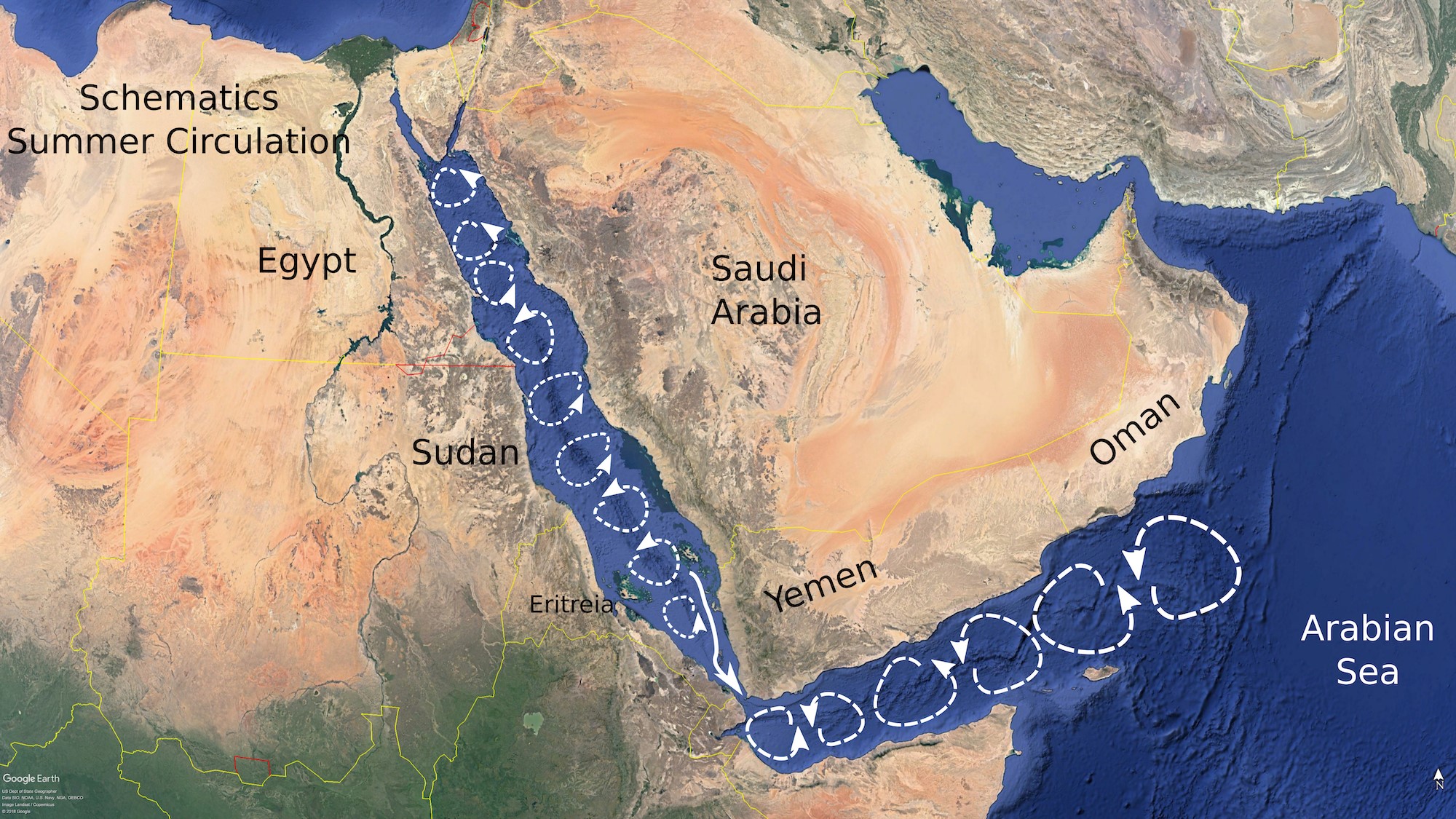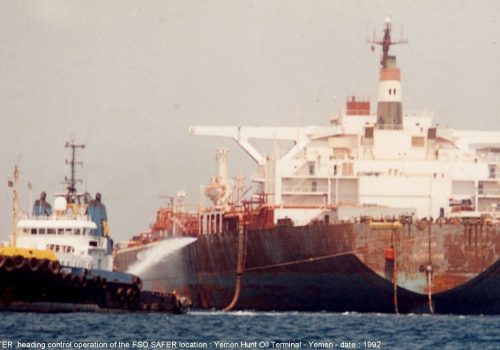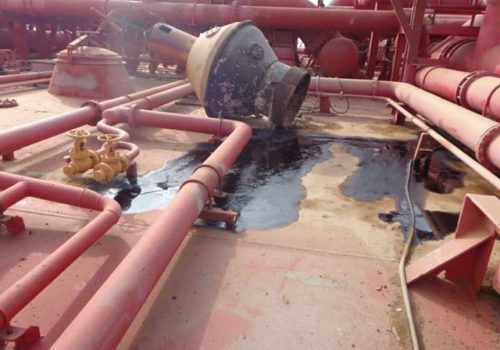Gaming out the disaster: What could go wrong with the FSO Safer
In April, we sounded the alarm about how the Safer, an oil tanker converted into a floating storage and offloading facility (FSO) near the Red Sea coast of Yemen and filled with an estimated 1.1 million barrels of crude oil, was not only structurally deteriorating but might actually explode. In the past week, news outlets around the world have taken up the story. But the question remains: what happens if the Safer spills all its oil?
Such an incident could have a far-reaching and highly destructive range of effects: desalinization plants contaminated, depriving tens of millions of people, some already on the brink of famine, of access to clean drinking water; the loss of marine ecosystems that may be the key to saving the rest of the world’s coral from warming seas; millions of desperate Yemenis literally starved for international aid because port facilities are unusable; tangible impact on the global economy from the temporary closure of Red Sea shipping lanes; armed conflict over basic necessities; and a downward spiral in an already fragile region. Those are all possible consequences of a million-barrel oil spill in the Red Sea.
There is no vessel more likely to precipitate such a multidimensional crisis than the Safer, which continues to decay despite continuous efforts to negotiate a way to secure the vast quantity of crude oil in its storage tanks. Mark Lowcock, United Nations (UN) undersecretary general for humanitarian affairs, would not venture to quantify the stakes for the UN Security Council: “I leave it to you,” he said, “to imagine the effect of such a disaster on the environment, shipping lanes and the global economy.”
Maritime oil spills are complex phenomena; even with the most sophisticated computer modeling, it is impossible to predict exactly how a spill will behave. Not only do currents, winds, weather, and a host of other external variables play into the situation; the composition of the oil itself, and the nature of the spill’s source, play crucial roles. That said, any oil spill on the order of a million barrels is a massive event; as a benchmark, when Saddam Hussein’s forces released about 1.2 million barrels of crude into the Arabian Gulf at the end of the first Gulf War, the resulting oil slick was four inches deep and covered some 4,000 square miles. While the variables surrounding the Safer are very different, some can be anticipated, and it is appropriate to game out possible consequences.
Earlier this year, one piece of the Safer became so corroded that it separated from the vessel; fortunately, it did not fall onto the submarine portion of the Marib-Ras Isa pipeline feeding into the FSO. Had things gone differently, that pipeline—which in normal operation delivered some 200,000 barrels per day to the Safer—might have dumped its contents into the Red Sea. That is only one of a few scenarios by which the Safer might create a disastrous oil spill. Another possibility, more remote but still very real, would involve volatile gases, accumulated since the last inert gas operation in June 2017, igniting in the headspace of one of the FSO’s thirty-four tanks, creating a fire or explosion that could break up the decrepit vessel. A third scenario—all too possible in the midst of a conflict characterized by repeated episodes of provocation—would be outright environmental vandalism, in which an actor or actors deliberately destroyed the Safer. While the ship could spring a relatively modest leak at any time, it is those three possibilities—structural deterioration from corrosion, accidental explosion, or intentional destruction—that present the greatest threat.
To begin with, a million-barrel oil spill in the Red Sea would have an immediate impact on the global economy. As Lowcock indicated, if maritime transit through the Red Sea, which accounts for 8–10 percent of world trade and roughly 5.5 million barrels of oil per day, were blocked due to the resulting hazards, exclusion zones, and cleanup efforts, the costs in both dollars and time would be gigantic. Vessels of all kinds carrying a wide variety of goods would have to delay their voyages or travel all the way around the Cape of Good Hope to transit between the Indian Ocean and the Atlantic or Mediterranean. Commodity prices, most obviously the price of oil, would spike. But understanding the broader spectrum of consequences to such a spill requires a careful look at the local conditions.
In conversation with the authors, Dr. Chris Reddy, an expert on marine pollution and petroleum geochemistry at the Woods Hole Oceanographic Institute (WHOI), pointed out that the critical variable in the impact of oil spills is the same as in real estate: “location, location, location.” The location of the Safer, in terms of both its immediate vicinity and the Red Sea as a whole, presents distinct hazards beyond global economics.
The Safer is permanently moored 4.8 nautical miles off Ras Isa, and about 32 nautical miles north-northwest of Hodeidah, a hotly contested city where international aid is delivered to the Yemeni people, millions of whom are living in extreme hardship after four years of ceaseless war. At under 5 miles from the shore, the Safer rests within what many states would adjudicate as the artisanal fishing zone, where small-scale fishers earn their livelihoods. That area includes diverse marine ecosystems, including a number of coral reefs. Any significant spill there would unavoidably impact those systems; a million-barrel spill could affect a much larger swath of the Red Sea.
This is because the Red Sea as a whole presents its own distinct problems. It is not open ocean but a semi-enclosed littoral sea, with only one narrow exit point: the Bab el-Mandeb strait into the Gulf of Aden. In the words of Dr. Viviane Menezes, an investigator at WHOI who has been studying the currents and winds of the Red Sea and spoke with the authors, “It’s a big lagoon, but it’s a lagoon, so everything is connected.” Within the Red Sea, there is a great deal of turbulence, but also two seasonal patterns in terms of currents. In winter, the dominant flow tends to be northward toward the Gulf of Aqaba (see Figure 1). The northward travel of some oil might be limited by coastal currents or transient features between a headland and Kamaran Island, but the eastern boundary current could potentially move much of the spill up along the coast into Saudi Arabian waters.
Figure 1.

In the summer, the relevant flow reverses, with a swift current running from the southern portion of the Red Sea through the Bab el-Mandeb into the Gulf of Aden (see Figure 2). A spill from the Safer in this season would be more likely to travel south along the coast, toward Hodeidah and then the Bab el-Mandeb.
Figure 2.

These scenarios are, of course, provisional given the other variables in play, the most important of which is the oil itself. The crude in the Safer and the Marib-Ras Isa pipeline, known as Marib Light, has very low density and high volatility, with an API gravity, according to one oil major’s assay, of about forty-five. This puts it not far in viscosity from diesel fuel. In a maritime spill, oils of different weights present very different hazards and challenges. Heavy oils will lose less to evaporation, but they also will be easier to contain at the water’s surface through booms and other measures. Marib Light would behave very differently: its volatility means it would lose as much as two-thirds of its total amount to evaporation in a matter of days, but its viscosity is so close to that of water that, amid turbulence, it would also mix easily into the surrounding seawater. This close to shore, according to Reddy, “dilution is not going to be on your side.” The rapid spread of the oil in those waters might result in what he described as “a curtain of water infused with hydrocarbons,” causing injury down the entire coastal water column. Again, as Reddy qualifies, the actual progress of a massive spill from the Safer would be difficult to predict, but “many possible outcomes would be harmful to both marine life and people.”
Depending on how a catastrophic spill from the Safer traveled, it could deliver a crushing blow to at least some of the Red Sea’s coral reefs. These reefs are not only intrinsically valuable systems of remarkable biodiversity and beauty; they are also major sources of revenue via tourism, and they contain a wealth of unique organisms and chemical compounds that could give rise to new and potentially revolutionary medicines, as well as other applications. In conversation with the authors, Dr. Maoz Fine of the Red Sea Transnational Research Center in Lausanne, Switzerland described those reefs as “a stockpile of resources for future generations.” Dr. Ove Hoegh-Guldberg, director of the Global Change Institute at the University of Queensland and one of the world’s foremost authorities on coral, affirmed to the authors, “We already know that coral reefs are extremely sensitive to oil from Gulf War 1, and an oil spill in that region would have devastating impact on the corals within the semi-enclosed waters” of the Red Sea.
One brutal irony in this is that the Red Sea’s coral reefs, having flourished in warm, highly saline waters for millennia, may hold the key to preserving coral reefs elsewhere in the world that are not so robust in their resistance to rising temperatures. As Fine put it, these ecosystems might be “the last reef standing” in the face of climate change. Because of that resilience, no fewer than seven of the coral reefs prioritized for conservation by the 50 Reefs Initiative are in the Red Sea; two of those are in the near vicinity of the Safer. Given that significant exposure to hydrocarbons can inflict damage that, according to Hoegh-Guldberg, “could take decades if not centuries to recover from,” it becomes clear that a major oil spill in the Red Sea would not only harm the distinctive and invaluable marine ecosystems there; it could severely compromise our ability to save reefs at a global level. The Red Sea’s coral may be able to survive climate change, but it might not survive the demise of the Safer.
The foundational importance of these marine ecosystems includes the human security of populations along the Red Sea coast, many of which rely on fishing and other coastal activities for their livelihoods and even basic sustenance. The loss of fishing grounds, or even access to fishing grounds, can create a cascade of problems as people deprived of work and possibly even food grow increasingly demoralized and desperate. In Yemen especially, millions of people are already in so fragilized a condition that those consequences would be extreme.
An even more immediate humanitarian issue, one with dire implications for regional security, is the impact a major oil spill might have on the most critical infrastructure surrounding the Red Sea: the region’s coastal desalinization plants.
There are two fundamental designs to the intake portions of desalinization plants on the Red Sea. The simpler of the two involves channeling seawater between two jetties; any oil that enters such an intake channel would probably contaminate the desalinization systems. The more sophisticated intake system uses velocity cap intakes, which sit on the sea bottom offshore and take in water from lower in the water column. While these mechanisms are at less immediate risk of contamination, an extremely light oil such as Marib Light, mixed along the water column amid coastal turbulence, might still enter them. The desalinization processes themselves also take two basic forms: reverse osmosis and flash evaporation. According to one expert source, reverse osmosis systems can have their filters clogged with oil; flash evaporation systems, which essentially distill the water using extreme heat, would suffer more pervasive damage, as the volatile organic compounds (VOCs) in the oil would evaporate before the water and contaminate the entire system. In these situations, a desalinization system would need to be purged—which would require, among other things, large volumes of clean water.
Millions of people in the mostly arid countries bordering the Red Sea depend on coastal desalinization plants for drinking water. While governments and contractors generally take care to situate those installations at a safe distance from petroleum facilities, a massive oil spill near the coast, from the Safer or a large tanker, could in certain conditions overmatch those precautions. Ship-based desalinization systems could be brought in to make up some of the deficit, but contamination on a sufficient scale, or in high-risk areas, could exceed that response capacity. Growing populations and aging facilities mean increased demand for new desalinization plants; the Saudi government, for instance, committed last year to building nine more on the Red Sea coast. Especially in countries with less capacity, contamination of desalinization plants could create an instant humanitarian crisis. Not only would public health be at grave risk—where drinking water abruptly becomes scarce, especially in an arid climate, violence often ensues, and can escalate existing regional conflicts or even spark new ones.
Similar issues of abrupt scarcity would result from the arrival of an oil spill at a major port facility. Within the seasonal patterns on the sea’s surface, a massive spill from the Safer during the summer, to say nothing of a large spill nearer the port facilities, could conceivably hamper or even shut down port operations at Hodeidah, sharply intensifying the humanitarian crisis already unfolding in Yemen, where tens of thousands of people have been killed and millions face possible famine.
Add to these considerations the human security of the crews tasked with cleaning up any spill off Yemen. Given the high volatility of Marib Light, any rapid response team taking on such a spill would face potential exposure to an evaporative cloud of VOCs, which not only contain carcinogens but, absent properly fitted protective equipment, can cause hazardous mental confusion. Dr. Bernard Goldstein of the University of Pittsburgh, who has studied the health effects of oil spills, framed it succinctly for the authors: “If there were no war on, you’d still have a dangerous operation.” Amid an armed conflict rife with mistrust and sudden eruptions of violence, the logistics and security required to mount a cleanup become almost prohibitively difficult. As Reddy put it, “How would you even get boots on the ground and stand up a command center in this environment?”
The clock is ticking on the FSO Safer. The Houthis in control of the vessel have demanded compensation on the order of $80 million for its oil—effectively a ransom, though a paltry sum compared to the measurable costs of a million-barrel oil spill. UN-led negotiations may yet achieve a peaceful resolution, but it is also clear that, for all the reasons enumerated above, we are all stakeholders in what happens to a decaying tanker attached to a submarine pipeline off the coast of Yemen. Concerted international pressure is not an option but a necessity. Mark Lowcock astutely left the consequences of such a disaster to the collective imagination of the UN Security Council. Ove Hoegh-Guldberg was more explicit about the moral and political responsibility involved: “The situation is entirely avoidable and it will be on the hands of governments everywhere if we don’t negotiate an outcome which removes the possibility of one of the largest and most damaging oil spills ever.” We would do well to heed that warning.
Dr. David Soud is head of research and analysis, Rohini Ralby is managing director, and Dr. Ian Ralby is founder and CEO at I.R. Consilium, LLC. Dr. Ian Ralby is also a senior fellow with the Atlantic Council Global Energy Center. You can follow Ian (@ImRalby), Rohini (@RohiniRalby), and I.R. Consilium (@IRConsilium) on Twitter.
Related content
Image: This south-southwest-looking, high-oblique photograph taken during the STS-61 mission shows the southwestern Arabian Peninsula, the Gulf of Aden, the Red Sea, northern Somalia, the Afar Triangle, and the Great Rift Valley of Ethiopia (photo by NASA Hubble Space Telescope/Flickr).


